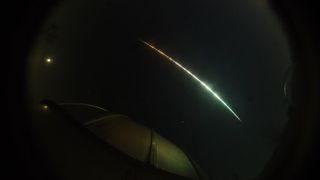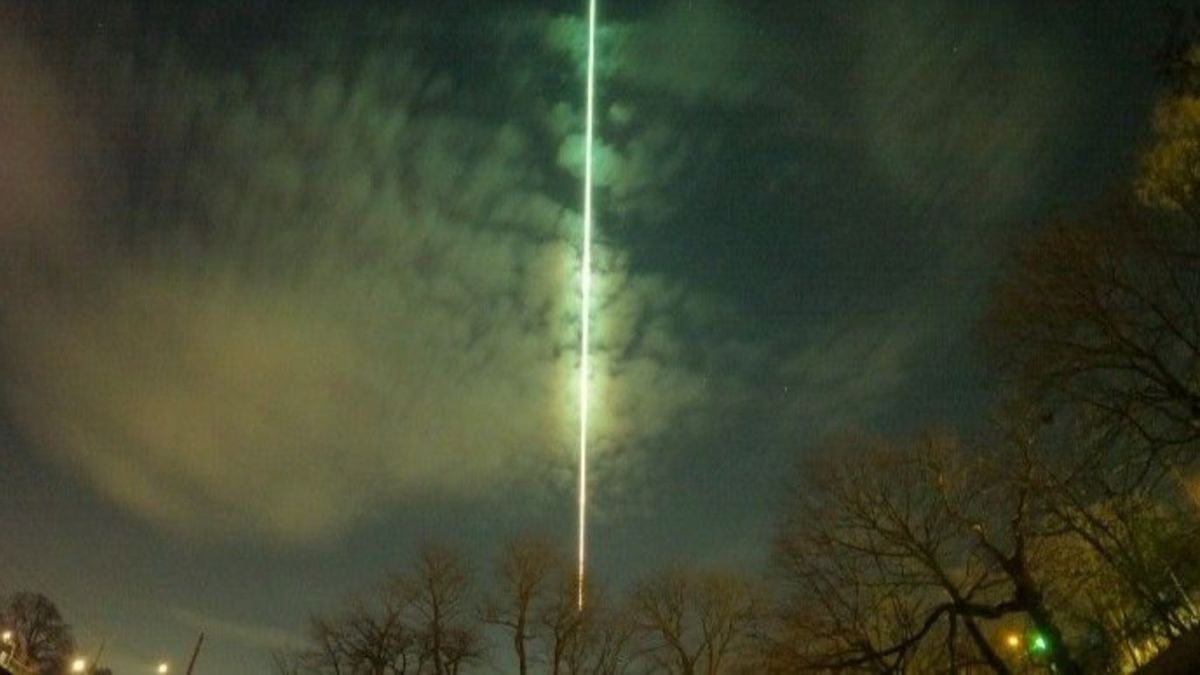An asteroid that fell to Earth in 2022 and exploded in a stunning green fireball above Canada was the smallest space rock ever properly measured, a new study suggests. The diminutive asteroid, which was only discovered a few hours before it blew up, was around the same size as an average domestic cat.
In the early hours of Nov. 19, 2022, asteroid 2022 WJ1 violently broke apart in the lower atmosphere due to intense friction from the air. This briefly illuminated the skies above Niagara Falls, creating a bright flash of green light that streaked through the sky for around 10 seconds and triggering a loud sonic boom. The explosion happened in southern Ontario but was also seen by some people in the Toronto area and farther south in states including New York, Ohio, Pennsylvania and Maryland, The New York Times reported at the time.
Astronomers from the Catalina Sky Survey in Arizona first spotted 2022 WJ1 around three hours before it entered Earth’s atmosphere. The team correctly predicted where it would end up, enabling equipment along the asteroid’s path — including the 4.3-meter Lowell Discovery Telescope (LDT), also in Arizona, and a meteor camera network at Western University in Ontario — to closely monitor the space rock as it passed overhead.
In a new study, published Nov. 22 in The Planetary Science Journal, researchers analyzed observations of the asteroid’s brightness, collected by LDT and Western University’s cameras, and determined that the space rock was somewhere between 16 to 24 inches (40 to 60 centimeters) wide. This is the smallest confirmed size for any asteroid, researchers wrote in a statement.
Smaller space rocks than 2022 WJ1 hit Earth every single day. However, none of them have been properly measured because scientists never see them coming until it’s too late.
Related: Watch huge fireball blaze over Lake Erie in stunning videos
While scientists are good at spotting the massive “potentially hazardous” space rocks circling our planet, it is very rare for astronomers to catch sight of an asteroid before it enters Earth’s atmosphere — at the time, this was only the sixth to have ever been spotted. Most other space rocks remain completely undetected or finally reveal themselves by triggering a fireball or falling to the ground, the researchers wrote.
Closely monitoring this impactor with both a telescope and a professional camera system enabled the team to compare data and make more accurate predictions about the meteor’s composition and size. This was the first time that astronomers had ever been able to do this, study co-author Denis Vida, an expert in meteor physics at Western University, said in the statement.
Study lead author Teddy Kareta, an astronomer at the Lowell Observatory in Arizona, added that “this first-ever comparison between telescopic and fireball camera data is extremely exciting, and means we’ll be able to characterize the next asteroid to impact the Earth in even better detail.”

This development is particularly intriguing because astronomers seem to be getting better at spotting space rocks as they approach our planet. Scientists have now recorded a total of 10 early identified impactors, including three in 2024: an asteroid that exploded above Berlin in January; a fireball that lit up the skies of the Philippines in September; and a meteor that burned up off the Californian coast earlier this month.
Researchers can also learn more about fireballs by collecting the fragments that fall to Earth’s surface as meteorites.
Black Friday 2024
Grab a discount on science kits, air purifiers, electric toothbrushes, telescopes, binoculars, cameras and more with these Black Friday deals, as recommended by our expert testers and editors.
No fragments of 2022 WJ1 were ever recovered, largely because most were expected to fall into Lake Ontario, according to a NASA report. But that doesn’t mean we won’t find them in the future.
“Two years on, any meteorites that fell on land will have blended in with the landscape,” study co-author Phil McCausland, a planetary scientist at Western University, said in the statement. “That said, there are people in the area who are searching and know what to look for. We may still get lucky and find a meteorite or two from this fall in the coming months and years.”


